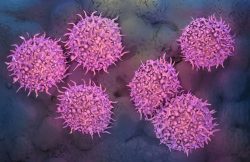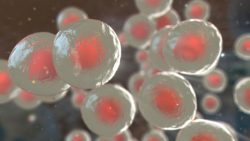 In a recent study, researchers used human-induced pluripotent stem cells and reprogrammed them into neural stem/progenitor cells (NSCs). They then collected extracellular vesicles generated by these NSCs, refined them, and delivered them via the nasal to mice exhibiting symptoms of familial Alzheimer’s disease.
In a recent study, researchers used human-induced pluripotent stem cells and reprogrammed them into neural stem/progenitor cells (NSCs). They then collected extracellular vesicles generated by these NSCs, refined them, and delivered them via the nasal to mice exhibiting symptoms of familial Alzheimer’s disease.
Extracellular vesicles are minuscule membrane-bound bubbles capable of transporting diverse substances, including RNA molecules and proteins. The technique involves extracting these vesicles from cells and administering them either locally or throughout the body, often achieving effects similar to direct cell therapy. In contrast to stem cells, EVs retain their therapeutic effectiveness even after being frozen and thawed.
RNA analysis showed the treatment suppressed several inflammation-related receptors, which were notably heightened in mice relative to their healthy counterparts. Importantly, this reduction in inflammation did not affect the microglia’s cellular intake function, which is the ability to absorb and remove pathogens.
This treatment significantly reduced the presence of AB plaques and phosphorylated tau protein, both key indicators of Alzheimer’s disease. While improvements were observed in both males and females, the response was more pronounced in males.
The evaluation included a test for object location and another for pattern recognition, along with an assessment of the mice’s mood. Recognizing mood changes as a significant clinical aspect of Alzheimer’s disease is becoming more common. Similar to Alzheimer’s patients, the mice that were untreated showed a decreased enjoyment of pleasurable activities, such as drinking water that has been sweetened. The EV therapy successfully reinstated their taste for sugary flavors.
As the study states, EVs surpass NSCs in key aspects, including their non-replicative nature and ability to cross the blood-brain barrier efficiently. Administering them through the nose is simple and allows for rapid delivery. Although the study was conducted on animals in the early stages of the disease, ongoing advancements in diagnostic techniques minimize this limitation.
The therapy’s effectiveness lies in the ability of EVs to deliver therapeutic molecules that may alleviate brain damage associated with Alzheimer’s disease. The development of this approach for treating Alzheimer’s disease is still in its early stages.
To view the original scientific study click below:
Extracellular vesicles from human-induced pluripotent stem cell-derived neural stem cells alleviate proinflammatory cascades within disease-associated microglia in Alzheimer’s disease





